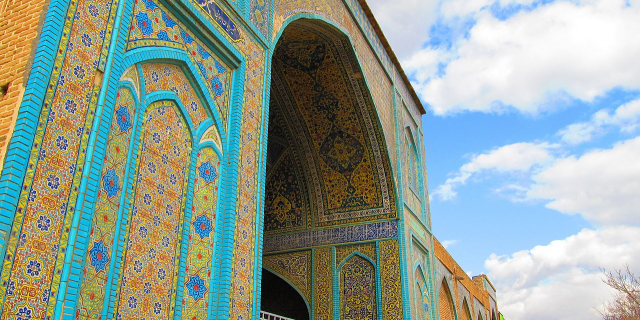سنگنوشته بیستون
( Behistun Inscription )The Behistun Inscription (also Bisotun, Bisitun or Bisutun; Persian: بیستون, Old Persian: Bagastana, meaning "the place of god") is a multilingual Achaemenid royal inscription and large rock relief on a cliff at Mount Behistun in the Kermanshah Province of Iran, near the city of Kermanshah in western Iran, established by Darius the Great (r. 522–486 BC). It was important to the decipherment of cuneiform, as it is the longest known trilingual cuneiform inscription, written in Old Persian, Elamite, and Babylonian (a variety of Akkadian).
Authored by Darius the Great sometime between his coronation as king of the Persian Empire in the summer of 522 BC and his death in autumn of 486 BC, the inscription begins with a brief autobiography of Darius, including his ancestry and lineage. Later in the inscription, Darius provides a lengthy sequence of events following the deat...Read more
The Behistun Inscription (also Bisotun, Bisitun or Bisutun; Persian: بیستون, Old Persian: Bagastana, meaning "the place of god") is a multilingual Achaemenid royal inscription and large rock relief on a cliff at Mount Behistun in the Kermanshah Province of Iran, near the city of Kermanshah in western Iran, established by Darius the Great (r. 522–486 BC). It was important to the decipherment of cuneiform, as it is the longest known trilingual cuneiform inscription, written in Old Persian, Elamite, and Babylonian (a variety of Akkadian).
Authored by Darius the Great sometime between his coronation as king of the Persian Empire in the summer of 522 BC and his death in autumn of 486 BC, the inscription begins with a brief autobiography of Darius, including his ancestry and lineage. Later in the inscription, Darius provides a lengthy sequence of events following the death of Cambyses II in which he fought nineteen battles in a period of one year (ending in December 521 BC) to put down multiple rebellions throughout the Persian Empire. The inscription states in detail that the rebellions were orchestrated by several impostors and their co-conspirators in various cities throughout the empire, each of whom falsely proclaimed himself king during the upheaval following Cambyses II's death. Darius the Great proclaimed himself victorious in all battles during the period of upheaval, attributing his success to the "grace of Ahura Mazda".
The inscription is approximately 15 m (49 ft) high by 25 m (82 ft) wide and 100 m (330 ft) up a limestone cliff from an ancient road connecting the capitals of Babylonia and Media (Babylon and Ecbatana, respectively). The Old Persian text contains 414 lines in five columns; the Elamite text includes 260 lines in eight columns, and the Babylonian text is in 112 lines. A copy of the text in Aramaic, written during the reign of Darius II, was found in Egypt. The inscription was illustrated by a life-sized bas-relief of Darius I, the Great, holding a bow as a sign of kingship, with his left foot on the chest of a figure lying supine before him. The supine figure is reputed to be the pretender Gaumata. Darius is attended to the left by two servants, and nine one-meter figures stand to the right, with hands tied and rope around their necks, representing conquered peoples. A Faravahar floats above, giving its blessing to the king. One figure appears to have been added after the others were completed, as was Darius's beard, which is a separate block of stone attached with iron pins and lead.
After the fall of the Persian Empire's Achaemenid Dynasty and its successors, and the lapse of Old Persian cuneiform writing into disuse, the nature of the inscription was forgotten, and fanciful explanations became the norm.
 Route to inscription at upper right.
Route to inscription at upper right. Context of the inscription (centre) in 2010. A person is visible in the lower left; reaching the inscription requires climbing the steep cliff face in front of them, then traversing a narrow ledge.
Context of the inscription (centre) in 2010. A person is visible in the lower left; reaching the inscription requires climbing the steep cliff face in front of them, then traversing a narrow ledge.In 1598, Englishman Robert Sherley saw the inscription during a diplomatic mission to Safavid Persia on behalf of Austria, and brought it to the attention of Western European scholars. His party incorrectly came to the conclusion that it was Christian in origin.[1] French General Gardanne thought it showed "Christ and his twelve apostles", and Sir Robert Ker Porter thought it represented the Lost Tribes of Israel and Shalmaneser of Assyria.[2] In 1604, Italian explorer Pietro della Valle visited the inscription and made preliminary drawings of the monument.[3]

































Add new comment